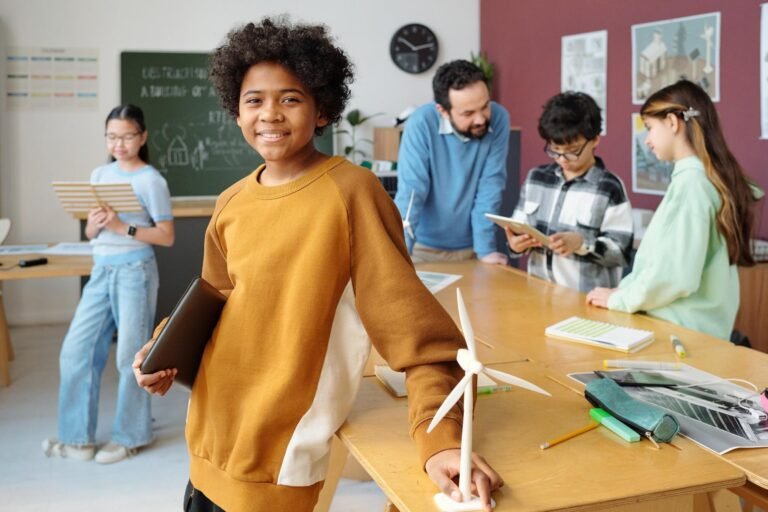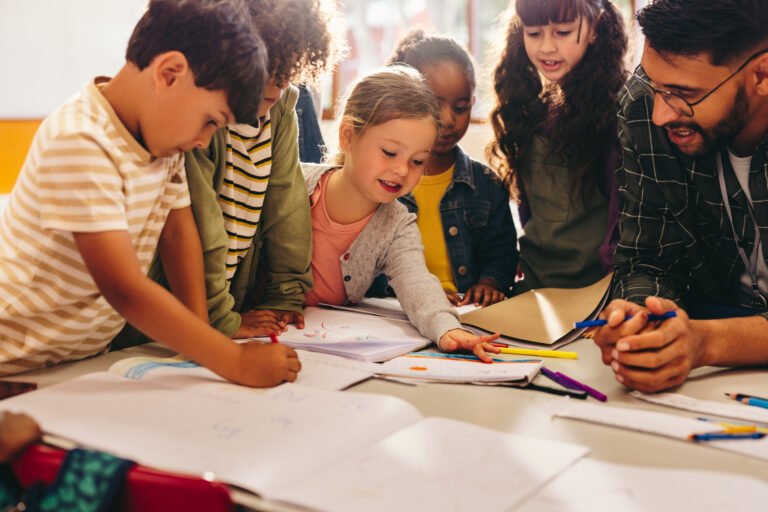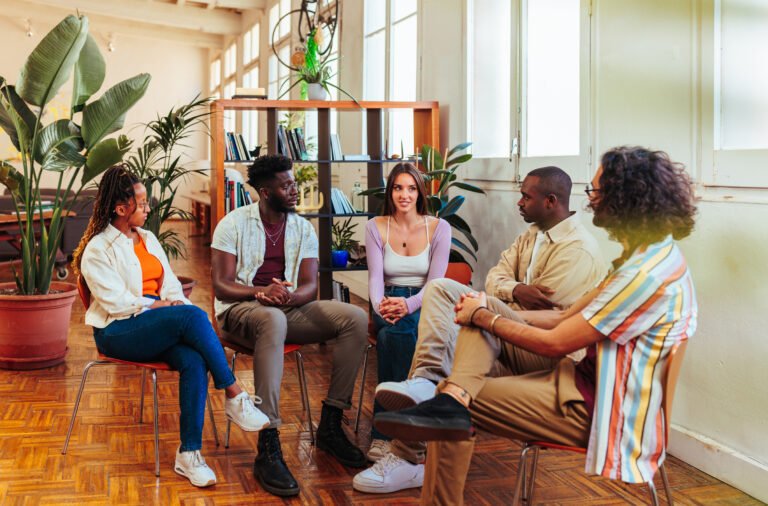
Gifted curriculum provides advanced, personalized learning strategies designed to challenge and engage exceptional students, fostering deeper understanding, creative problem-solving, and academic growth tailored to their unique pace and interests.
Ever wonder why some kids seem to breeze through school and still want more? Gifted curriculum isn’t about busywork—it’s about customizing learning so these sharp minds can really explore, ask big questions, and connect ideas in fresh ways. In my experience, this kind of tailored approach makes all the difference for gifted kids craving a challenge that fits.
Why gifted students need differentiated curriculum
Why do gifted students need differentiated curriculum? Well, imagine everyone trying to drink from the same small water glass when some need a big bottle to really quench their thirst. That’s what happens with typical school lessons—they just don’t fill the tank for gifted kids.
You see, these students often grasp concepts faster and crave more challenge. If the work isn’t varied, they might feel bored or check out mentally. Heck, that’s like asking a race car driver to meander through a parking lot. Not ideal, right?
- Different pace: Gifted students learn quicker, so curriculum needs to keep up speed, not slow them down.
- More depth: They thrive on exploring topics in detail, diving deeper than standard lessons allow.
- Complexity: They enjoy tackling abstract ideas and creative problem-solving, not just memorizing facts.
- Interest-based: Tailoring content to their passions can boost motivation and long-term engagement.
Studies show that gifted learners who receive differentiated instruction score higher on standardized tests and report more satisfaction in school. One study from the National Association for Gifted Children highlights how tailored learning helps reduce boredom and behavioral issues.
Honestly, it’s like giving these students the right tools to build a rocket instead of just a paper airplane. It sparks curiosity, keeps their minds buzzing, and helps them reach their potential without feeling boxed in.
Modifying content for accelerated, complex learning
How can modifying content support accelerated, complex learning? Think of it like upgrading from training wheels to a mountain bike. Gifted students need that boost to handle steeper, trickier trails without falling off.
Modifying content isn’t just about going faster; it’s about going deeper. You know, giving students chances to explore ideas from new angles or tackle problems that make them stop and say, “Hmm, that’s interesting.”
- Increase complexity: Present concepts that challenge their reasoning, like multi-step math problems or debates about real-world issues.
- Accelerate pace: Cover topics earlier or faster than usual while ensuring understanding doesn’t get sacrificed.
- Integrate cross-subject themes: Blend subjects such as science and history to spark connections and creativity.
- Use open-ended questions: Encourage students to think critically and express unique perspectives.
One study from the National Education Association points out that students exposed to enriched, accelerated content often show significant growth in problem-solving skills and creativity.
Honestly, it’s like shifting gears on your bike right when the path gets steep—keeping the momentum without spinning out. Why settle for less when you can tailor the ride for their strengths?
Process changes: Encouraging critical, abstract thinking
How can process changes encourage critical, abstract thinking? Picture this: instead of just memorizing facts, students start asking “why” and “what if?” questions that turn learning into an adventure.
You know, it’s like moving from following a recipe to creating your own dish. Gifted students need opportunities that let their minds roam free, tackling puzzles with curiosity and creativity.
- Encourage questioning: Prompt students to ask deep, open-ended questions about the material.
- Use problem-based learning: Present real-world challenges that require critical analysis and creative solutions.
- Promote reflection: Give time for thinking about how and why things work—not just what works.
- Foster multiple perspectives: Help students explore different viewpoints to develop flexible thinking.
Research from the Center for Talent Development shows that promoting abstract thinking helps gifted learners build stronger problem-solving skills over time.
Honestly, it’s like giving your brain a workout that’s both challenging and fun—kind of like a puzzle that won’t quit until you figure it out. Who doesn’t like that?
Creating an environment that sparks creativity and independence
How do you create an environment that sparks creativity and independence? Think of it like setting up a garden where different ideas can grow wild and free—without too many fences.
You know, gifted kids need space to explore their own thoughts and make choices, not just follow instructions. It’s kinda like learning to ride a bike without training wheels—scary at first but so liberating.
- Offer flexible learning spaces: Areas where students can work alone or collaborate, with materials handy for hands-on projects.
- Encourage risk-taking: Let mistakes be part of learning. It’s like giving permission to try new paths without fear.
- Promote self-directed learning: Support students in choosing topics or projects that excite them.
- Use open-ended assignments: Tasks without a single right answer encourage originality and personal expression.
One survey by the National Gifted and Talented Organization found that classrooms encouraging independence saw up to 40% higher engagement among gifted learners.
Honestly, setting up this kind of environment is like giving your brain a bubble bath—refreshing, relaxing, and ready for creative splashes. Who wouldn’t want that at school?
Flexible products: Letting students show what they know their way
How can flexible products let students show what they know their way? Imagine handing over the microphone and letting students tell their story in the way that suits them best. That’s the magic of flexibility in learning.
You know, not everyone shines with traditional tests or essays. Heck, some kids express deep understanding through art, presentations, or even videos. Why box them in?
- Offer varied options: Allow students to choose projects, presentations, or creative works that demonstrate their knowledge.
- Encourage personal strengths: Whether it’s writing, drawing, or coding, let each learner pick their best outlet.
- Use rubrics focused on skills: Grade on critical thinking, creativity, and understanding—not just format.
- Promote ownership: When students select their product, they feel more invested and motivated.
Research by the U.S. Department of Education shows that student choice in assessments boosts engagement and retention. It’s like giving each brain its own favorite way to beat the drum.
Honestly — who wouldn’t want to show what they know in a way that feels right? It’s all about unlocking potential, not limiting it.
Measuring success and adapting curriculum for gifted learners
How do you measure success and adapt curriculum for gifted learners? Think of it like adjusting the sails on a boat—you’re constantly tweaking to catch the best wind for their journey.
Success isn’t just grades or test scores. Gifted students often shine in creativity, problem-solving, or leadership, which can be harder to measure but just as important.
- Use varied assessments: Combine tests, projects, portfolios, and presentations to get a full picture.
- Set personalized goals: Goals should match each student’s strengths and growth areas, not a one-size-fits-all standard.
- Gather ongoing feedback: Talk regularly with students, parents, and teachers to understand progress and challenges.
- Be ready to adjust: If a lesson feels too easy or hard, adapt it quickly to keep them engaged and growing.
A study from the National Association for Gifted Children found that adaptive curriculums significantly boost both engagement and achievement among gifted learners.
Honestly, it’s like fine-tuning a musical instrument—you want every note to hit just right so the whole piece sounds beautiful. Don’t you agree?
Wrapping up
Gifted curriculum can truly make a difference when it’s tailored to fit each student’s unique needs. It’s about giving them room to grow, explore, and show what they know in their own way. Remember, it’s not just about speed—it’s about depth and creativity too.
Measuring success means looking beyond grades and tests. It’s about how engaged and excited students feel as they learn and grow. Adjusting curriculum based on their progress keeps things fresh and challenging, kind of like tuning your favorite playlist just right.
So, what little change can you make today to help a gifted learner thrive? Maybe it’s offering more choices or asking a curious question. Hey, it’s okay to figure it out as you go—sometimes learning is the best kind of adventure.
FAQ — your questions about gifted curriculum answered
What is a gifted curriculum?
A gifted curriculum is designed to challenge and engage students who learn faster or deeper than typical lessons allow.
How can a gifted curriculum help my child?
It offers personalized learning that matches your child’s pace and interests, helping them stay motivated and curious.
Can gifted students thrive without a specialized curriculum?
They might, but many experts agree that tailored lessons help prevent boredom and unlock their full potential.
Is it okay for gifted learners to learn at a faster pace?
Yes! Moving at a suitable speed helps them stay engaged, but understanding should always come first.
Should gifted curriculum include creative projects?
Definitely. Creative tasks encourage critical thinking and let students express their ideas in unique ways.
How can teachers measure progress in gifted students?
By using varied assessments like projects, portfolios, and discussions alongside traditional tests for a complete view.

A certified Heal Your Life® Coach with 20+ years in education and emotional development. Supports gifted teens in navigating anxiety, perfectionism, and identity challenges, while equipping parents with practical tools for lasting transformation. Sessions blend emotional healing, mindset mastery, and strategic empowerment.



